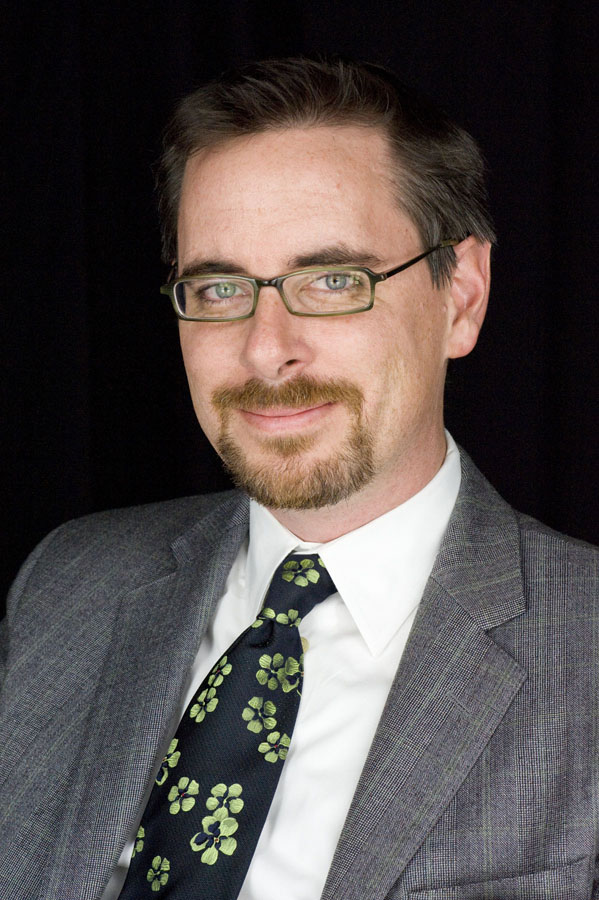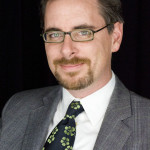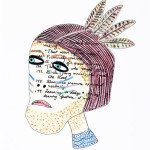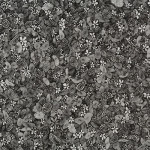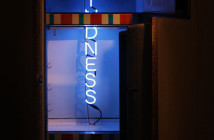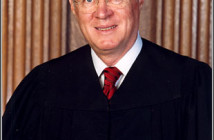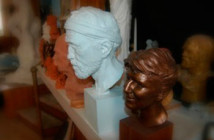A CONVERSATION WITH DENNIS KOIS
Jess T. Dugan: How did you come to be the Director of the DeCordova, and what drew you to this museum in particular?
Dennis Kois: The Board had hired a New York firm that specializes in museum searches, Pillips Oppenheim, and they called a colleague from my time at the Freer Gallery of Art, who gave them my name. I was surprised to get their call asking if I was interested, but very excited—I’d visited the DeCordova in the past and thought it had great potential. Ever since visiting I’d felt DeCordova had incredible potential to create thoughtful opportunities for visitors to experience and engage art. The landscape is a big part of that potential, certainly, as is the Museum School. But what matters most, of course, is what we choose to show and collect.
JTD: Do you feel that the exhibitions at the DeCordova respond to trends in the art world, or do you think they influence them?
DK: Frankly, I think some of our exhibitions have existed in their own little bubble, and opportunities to connect to the art world at large have been missed. Clearly that is problematic and we’ve lost a lot of credibility because of it. On the flip side some of our exhibitions have helped the DeCordova establish a reputation as a uniquely accessible institution for visitors, and in particular for families, which is a part of our core identity that I’d like to retain. Unfortunately over time that institutional self-identity has come to be serviced by the museum taking very few curatorial risks and showing work that is easy to like or just elicits a collective shrug. At the end of the day I’d rather see us show really challenging work and then work hard to find ways to provide points of entry and make it accessible for our audience.
JTD: The DeCordova is known for being a unique museum, both because of its sculpture park and its contemporary exhibitions. What vision do you have for advancing the DeCordova’s image as a unique and contemporary museum?
DK: There are some major changes coming in the next year, not all of which I can go into here. Overall there is going to be a marked and immediate increase in the quality of the exhibitions we mount, on every level—from the art we show to the installations, publications to scholarship. The sculpture park needs to become a core part of what we do—that is one area in which I think we can, in time, lead nationally. I’d like to see us do a much better job of tying the sculpture park into our exhibits and programming. I think you’ll see stronger collaborations, more incoming loan exhibitions, and DeCordova sending our curatorial projects out nationally. We are likely going to continue to collect New England art, but in a much more thoughtful and focused manner. Our exhibition program is going to open up and become national in scope but with some special attention to New England, and perhaps even international in the sculpture park. We’re still thinking these things through.
JTD: Will you make any changes to the format of the Annual?
Yes. Next year the Annual is being moved to the winter (it has previously been a summer show), and it will be curated by a single in-house or guest curator, rather than by committee. We’re still considering options for the Annual after that. It should not simply be a recapitulation of local gallery shows from the past year—if we can’t make it fresh and strong we shouldn’t be doing it.
JTD: How do you envision your relationship with the curators?
My role is to support their vision, to find a way to fund the projects they want to do and to support the risks they want to take. At the same time, I need to shape the overall mix of projects and programs we undertake to support the mission and my strategic goals for the museum.
JTD: Will you restore the Curator of New Media Position?
DK: Not immediately, no. But George Fifield and I have already had some fruitful discussions and we’re hoping to collaborate on a major exhibition in 2010, and then periodically after that. New media has an important role to play at DeCordova; if you had to pinpoint a house style of art in Boston, new media would have to be near the top of the list. We want to support that in whatever way we can.
JTD: The DeCordova, like many museums, is attempting to attract a younger population. How does the involvement of younger artists and critics affect the work exhibited?
I’m not sure the two are directly related. If we’re showing strong work we’ll build credibility with a younger audience, and with younger artists, regardless of the age of whom we show. The best young artists I know are just as into Sol LeWitt as they are Allison Smith or Dario Robleto. But what younger population are you working to attract? Wealthy young funders? Emerging artists? Young families with kids? Those are distinctly different demographics, with different needs from a museum.
JTD: The corporate art loan program seems to be an important way that the DeCordova attracts donors and gets the work of artists into the public sphere. How has this program advanced either the success of the museum or the success of the artists involved?
It’s a great program, and one that is relatively unique in the museum world. Providing annual, on-site curated shows of local artists for corporate members gets working, Boston-area artists exposure. Some of the works sell as a result of being in the program, which puts money in the artist’s pocket, and I think most importantly the program encourages corporations to have a tangible, real relationship to supporting the cultural fabric of the city. We’re in fact looking for a Director of that program right now, so if anyone reading this knows of someone stellar, send them our way!
JTD:With many museums undergoing renovation to be more contemporary, and with the current competition of museums not only with one another but with other entertainment venues, how do you plan to continue to draw visitors? Do you feel that the art alone is enough, or do you lean more towards the idea that a museum should be a complete and varied experience?
DK: While I was in Washington I taught exhibition design in the Museum Studies grad program at George Washington University, and the core message of the courses I taught was always that museums are experiential. The whole experience matters—the art, the environment, the social experience of visiting a museum, wayfinding, what and how visitors learn, feeling a sense of wonder, being challenged, seeing something new. There’s a great book that gets at the heart of this idea, particularly of creating a sense of wonder, a space into which museum can open up possibilities in visitors for experience and dialogue: Mr. Wilson’s Cabinet of Wonder of Wonder by Lawrence Weschler, which I used to have all my students read at the start of the semester. It’s about the Museum of Jurassic Technology in L.A., which is part homage to museums, performance art, and a critique of institutional authority all at once.
All that said, however, I always come back to the art. I think my years at the Met made me a bit of a traditionalist at heart. Quality needs to lead our program, and the rest will follow. Having shows that are unique, that are relevant to Boston and our location near all this history, is critical. Next summer, for example, we are going to be the only East Coast venue a major traveling exhibition that I think some may find surprising for DeCordova. I can’t reveal details yet, but it’s a really strong show and will show a different direction for DeCordova. On a more local level, we’re helping underwrite production of Ann Carlson and Mary Ellen Strom’s newest project, Simulating Buffalo, and will premiere it here this winter within an exhibition of their work. We’ve also made the decision to acquire that piece, based on the strength of their recent works. We’ve just opened a show of Laylah Ali’s newest body of work. We’re also showing a really strong group show drawn from across the country of obsessive drawing, Drawn to Detail. We’re hoping to launch a quick-turnaround, experimental project series with a focus on regional artists, and have a lot more site-specific, project-based work in the sculpture park and museum. Things are changing.
JTD:Where do you see the Decordova five years from now? What is your vision and hope for the direction of the museum?
DK: In five years I’d like to see us recognized as having undergone a sea change as far as the quality, relevance, and prominence of our exhibitions and programs. We should be building credibility as a national leader in outdoor sculpture and a leader locally in public art. I’d like us to be doing innovative projects and collaborations, and have a really tightly focused mission and identity. I could keep going of course— the truth is DeCordova has incredible potential to grow and thrive.
- A new face in Lincoln – Dennis Kois, the new Director or the DeCordova Museum & Sculpture Park
- Currently on view: Laylah Ali, Untitled, gouache, colored pencil and ballpoint pen on paper, 2008. Courtesy Miller Block Gallery, Boston, MA.
- On view as part of Drawn to Detail: Astrid Bowlby, Dark Garden (detail), ink on paper, 2007. Courtesy of Gallery Joe, Philadelphia, PA
DeCordova Museum & Sculpture Park

